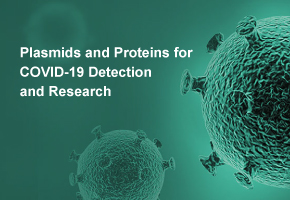Navigating the Digital Skies: A Market Analysis of the Air Traffic Management Sector
The air traffic management (ATM) market is the invisible yet vital force ensuring the safe and efficient flow of aircraft globally. As air travel rebounds and technology advances, the demand for sophisticated ATM solutions is escalating. This blog post delves into the ATM market from a market-oriented perspective, analyzing its current state, key trends, and future growth drivers.
Market Overview
The ATM market encompasses the systems and services that manage air traffic, including:
- Communication, Navigation, and Surveillance (CNS) systems
- Air Traffic Control (ATC) automation
- Airspace management
- Weather information systems
- Air Traffic Flow Management (ATFM)
These systems serve a diverse range of stakeholders:
- Air Navigation Service Providers (ANSPs)
- Airports
- Airlines
- Government regulatory bodies
- Technology providers
Market segmentation includes:
- System type (CNS, ATC, ATFM)
- Component (hardware, software, services)
- Deployment (en-route, terminal, airport)
- Region
Market Size and CAGR
The Alfalfa Concentrate Market is expected to register a CAGR of 6.8% from 2025 to 2031, with a market size expanding from US$ XX million in 2024 to US$ XX Million by 2031.
Key Market Trends
- Digital Transformation: The shift towards digital ATM systems is accelerating, driven by the need for enhanced efficiency and data-driven decision-making.
- Space-Based ADS-B: Space-based Automatic Dependent Surveillance-Broadcast (ADS-B) is revolutionizing air traffic surveillance, particularly in remote and oceanic regions.
- Artificial Intelligence (AI) and Automation: AI and machine learning are being integrated into ATM systems to optimize airspace utilization, enhance predictive capabilities, and automate routine tasks.
- System-Wide Information Management (SWIM): SWIM is facilitating seamless data sharing and collaboration among ATM stakeholders, improving situational awareness and decision-making.
- Unmanned Aircraft System Traffic Management (UTM): The integration of drones into airspace is driving the development of UTM systems to manage low-altitude traffic safely.
Market Drivers and Challenges
- Drivers:
- Growing global air traffic volumes.
- Increasing demand for efficient airspace utilization.
- Emphasis on safety and security.
- Technological advancements in CNS and automation.
- Regulatory initiatives for airspace modernization.
- Challenges:
- High investment costs for advanced ATM systems.
- Complexity of integrating legacy systems with new technologies.
- Cybersecurity threats and vulnerabilities.
- Regulatory hurdles and certification processes.
- Shortage of skilled ATM professionals.
Future Growth Opportunities
- Advanced Airspace Management: Implementing AI-powered solutions to optimize airspace utilization and reduce delays.
- Remote Tower Operations: Expanding the use of remote towers to manage air traffic at smaller airports, reducing operational costs.
- Collaborative Decision Making (CDM): Developing platforms that enable seamless collaboration among airlines, airports, and ANSPs.
- Sustainable ATM Solutions: Implementing technologies and procedures that reduce fuel consumption and carbon emissions.
- Enhanced Weather Information Systems: Integrating advanced weather forecasting and monitoring capabilities to improve flight planning and safety.
FAQs
- Q: What is the primary goal of modern Air Traffic Management systems?
- A: To ensure the safe, efficient, and orderly flow of air traffic.
- Q: How does space-based ADS-B improve air traffic surveillance?
- A: By providing real-time tracking of aircraft, especially in areas where ground-based radar coverage is limited.
- Q: What are the main challenges in implementing advanced ATM systems?
- A: High costs, integration complexities, and regulatory hurdles.
- Q: How is AI being utilized in the ATM market?
- A: For optimizing airspace management, predicting traffic flows, and automating routine control tasks.
- Q: What is the role of SWIM in the ATM ecosystem?
- A: To enable seamless data exchange and collaboration among all stakeholders, improving overall efficiency and safety.
- Like
- Reply
-
Share
About Us · User Accounts and Benefits · Privacy Policy · Management Center · FAQs
© 2025 MolecularCloud



